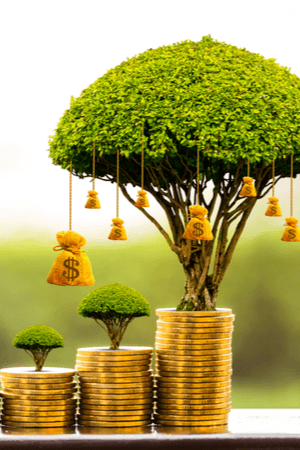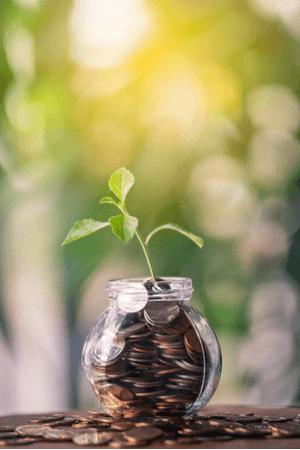Green stocks
Sustainable energy is starting to play an increasingly important role in our daily lives. This is not only because all kinds of government measures are being introduced in this area. It also has to do with the fact that the price for generating this type of green energy is becoming increasingly cheaper, which makes it increasingly attractive to opt for a sustainable alternative.
In addition to choosing sustainable energy or materials, you can also invest in sustainable or green stocks. This simply means investing in stocks of companies that are engaged in sustainable/green activities. In addition to specific stocks, you can also invest in a green fund, with only securities of companies that perform sustainable activities.
Not everyone is happy
Companies and countries that would like to continue selling as much fossil fuels as possible to make a nice profit are less happy with these green developments. They see the prices of sustainable energy companies explode on the stock exchanges , which is a clear indication that investors are also changing. Multinationals such as Shell and BP are currently making frantic attempts to still hitch a ride on the trend of sustainable energy projects and in the sun-drenched oil state of Dubai the record for the lowest price for solar power has been reached. But aren’t these market players actually too late with this? Time will tell.
Clear growth market
Smart investors are the ones laughing in this whole thing. Those who invested part of their money in shares of sustainable energy companies in recent years were often treated to price gains of tens of percent. There were even share prices that more than doubled in just one year. And given the many billions that banks and pension funds, among others, continue to invest enthusiastically in this sector, there is still plenty of room for improvement and there will be plenty of pleasant price gains to be enjoyed in the coming years.

First analyze, then invest
Simply investing your money in shares of a company because it happens to perform ‘green’ activities is not wise. Always do your homework before you actually invest, read more about making analyses here . Gather as much information as possible about the company you have your eye on and try to create a realistic picture of the expected future of the company based on those sources. In any case, it is unwise to invest all your money in just one company. Spread your risks by owning shares of several different companies, so that possible price losses are absorbed by shares that do score well.

Green shares through a fund
If you find it difficult to make the right analyses yourself, you can also choose to invest in a stock fund . Such a fund consists of a ‘basket’ of various shares of leading European sustainable energy companies. In this context, think of shares of companies such as SMA Solar Technology, a German manufacturer of inverters for solar energy installations, and Verbio Vereinigte BioEnergie, also German and active in the production of biofuels. In both cases, shares that have increased enormously in value in a relatively short period of time. Such a stock fund is managed by experts who continuously monitor market developments and do their utmost to maximise the fund’s return in a responsible manner. However, this is no guarantee that there is no risk at all with this form of investment. Factors such as market developments and mismanagement within the fund could cause the price to fall.
Plenty of growth potential in the coming years
If we look purely at the developments for sustainable energy on the European market, we see that previously set targets have not yet been achieved, which means that there are still plenty of growth opportunities. However, this does not guarantee a positive return.
Compare brokers and start investing in stocks
Are you excited about investing in stocks after reading this article? Use our comparison function and find the broker that suits you best!